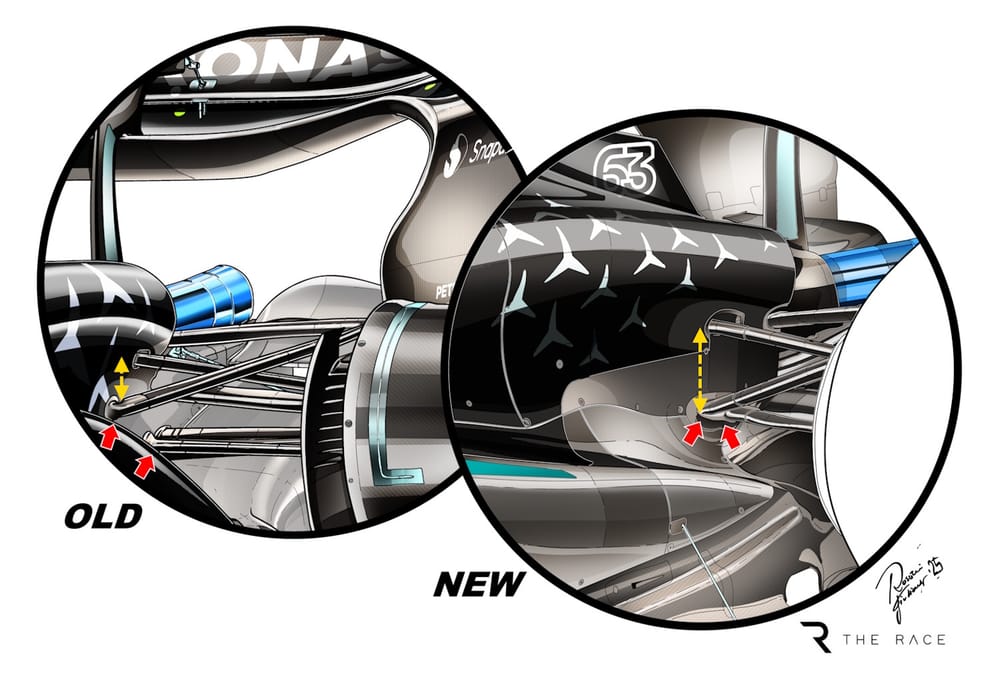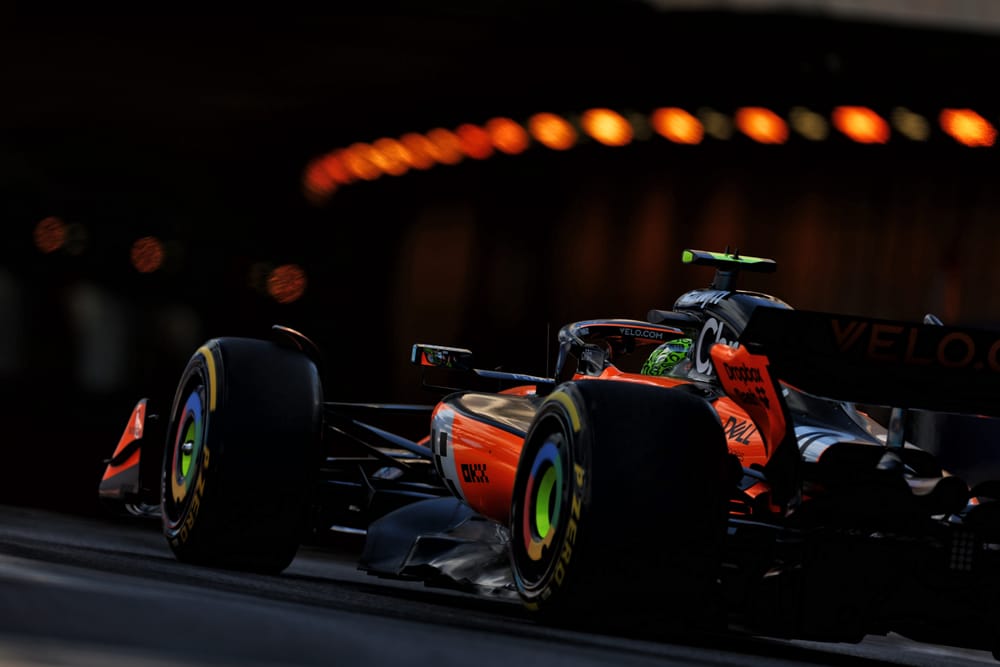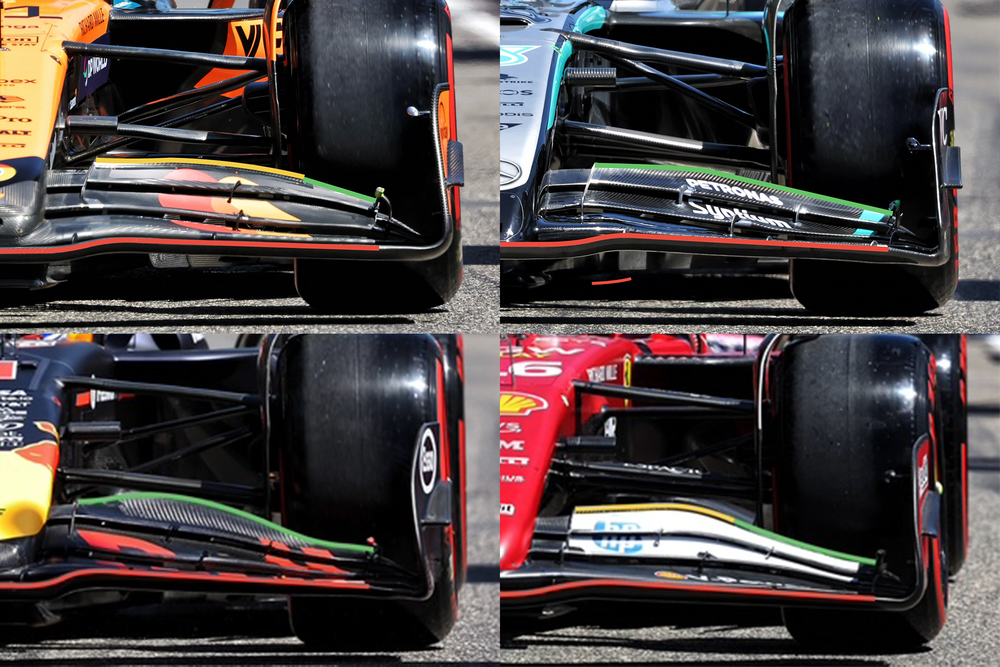The Mercedes Formula 1 team has elected to park for now the upgraded rear suspension it brought to Imola, as it continues to work on improvements to it.
As part of an update package for the Emilia Romagna Grand Prix which incorporated a new front wing and revised front suspension fairings, the team also made revisions to its rear suspension geometry.
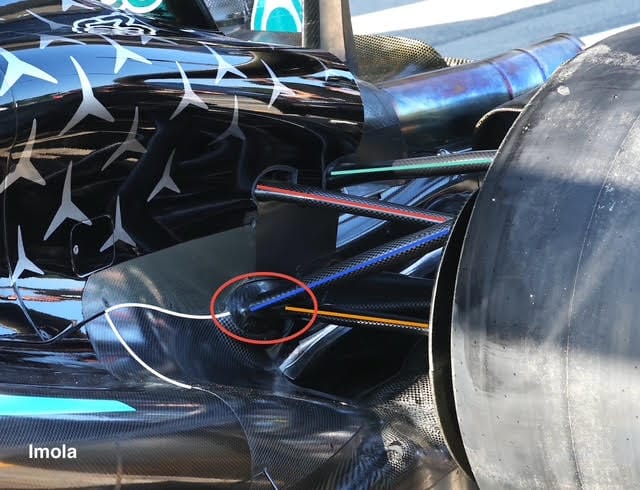
This included a new inner pickup point for the top wishbone forward leg, which is highlighted with the red ellipse above. This looks like it was connected to the inner lower wishbone forward pickup point.
As can be seen in our comparison illustration, and thanks to the white line that shows the bodywork split line above, the change appears to have lowered the pickup point by around 25mm/30mm.
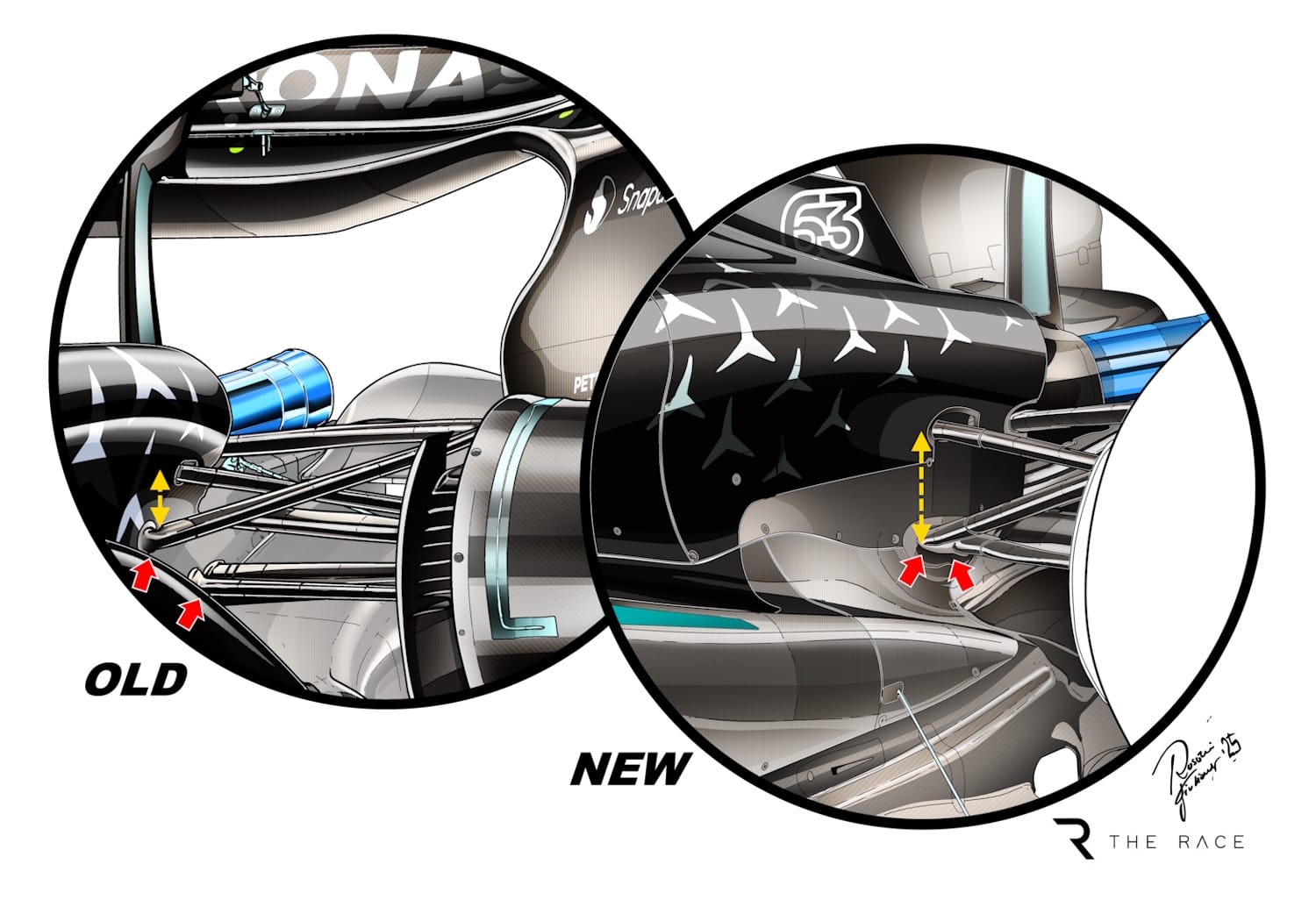
There will also likely have been further tweaks to the inner mounts of the wishbones to allow it to achieve this.
The team had clearly hoped that the revisions would improve its mechanical and aero platform and deliver gains in terms of tyre management, but things did not quite work out like that.
Both George Russell and Kimi Antonelli struggled to find a level of consistency in car performance that they had enjoyed earlier in the campaign.
Unsure about whether its disappointing form in Imola was triggered by the suspension changes or something else, for last weekend's Monaco GP Mercedes reverted to the specification it had used previously.
This decision was also driven by the need to work with a more familiar baseline for the streets of Monte Carlo, in the hope of finding quicker set-up solutions for a car that continues to challenge its drivers.

The team had been weighing up which suspension configuration to bring to this weekend's Spanish GP, so it was possible it would try again with the Imola version.
But Mercedes has decided that the upgrade needs more work to be done on it at the factory before it returns to the race track, which is why it will be sticking for now with the version it ran at the start of the season.
No date has yet been set for when Mercedes intends to bring the new suspension back.
Upgrade doubts
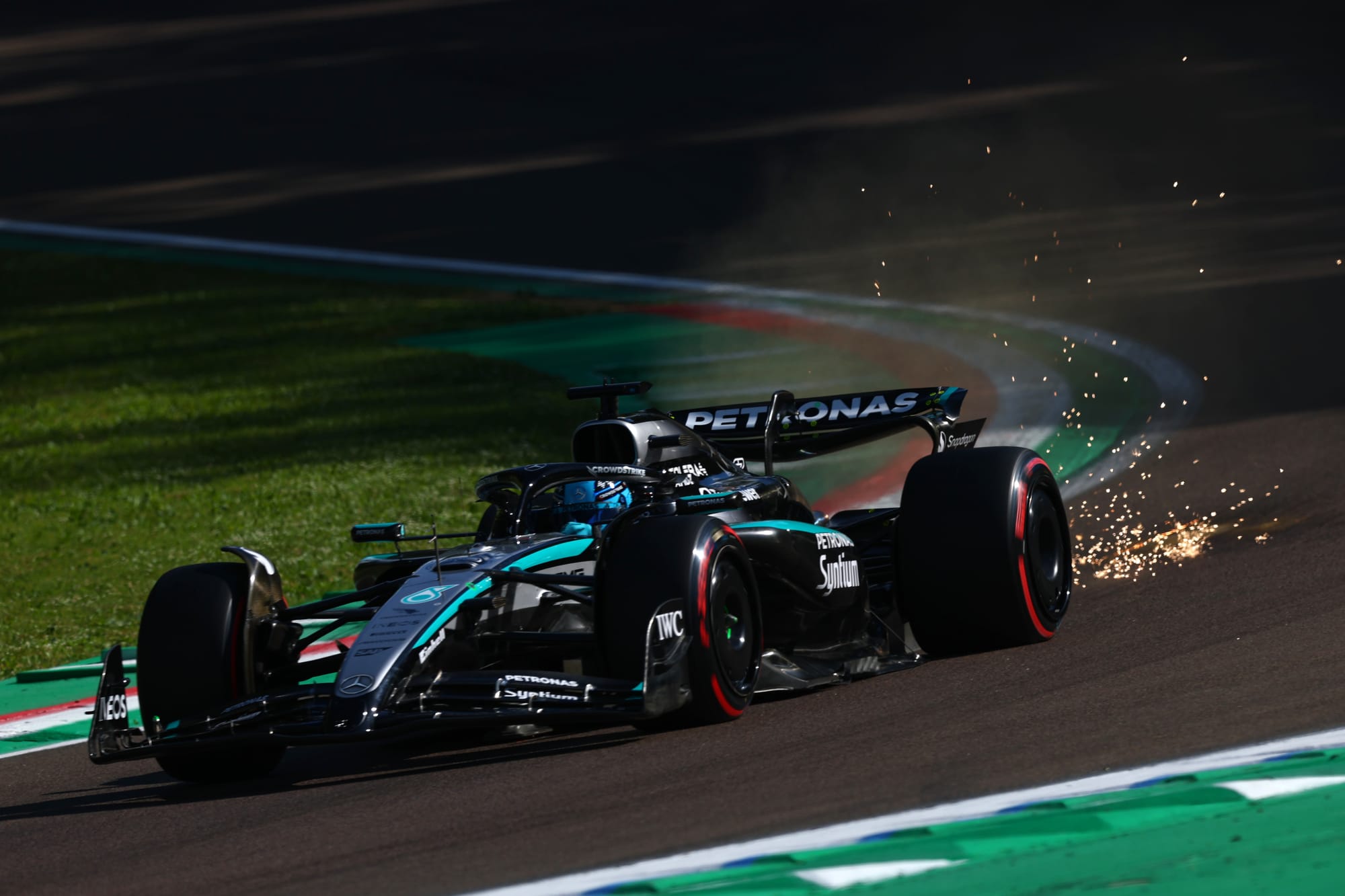
The debut and then removal of the revamped rear suspension has exposed Mercedes' own uncertainty about why its form has dipped recently.
After a solid start to the 2025 season, where it was consistently on the podium, things have taken a downturn since Bahrain, with an even greater dip over the last races in Imola and Monaco.
This drop in performance had a direct impact on the constructors' championship battle, with Ferrari and Red Bull reducing the gap to Mercedes in the fight for second.
And Red Bull, while not shining as in previous seasons, has found more consistency thanks to updates that seem to have improved the balance of the RB21.
Mercedes boss Toto Wolff has admitted that the team does not have a definitive answer on whether its form is down to it taking a wrong turn with upgrades or it simply struggling in hot temperatures - as it did in 2024.
"We've seen not only with us, but also with Red Bull and Ferrari, that you suddenly lose a little bit of your way, and you come into some kind of state where you're not sure whether an upgrade works," he said.
"Or it could be the ambient conditions that have you over. The hot races were our Achilles' heel last year and the cold ones, we dominated.
"So we will assess. Let's see how Barcelona goes and the races after that. But it's less of a performance than we had pre-Miami."
Latest wing
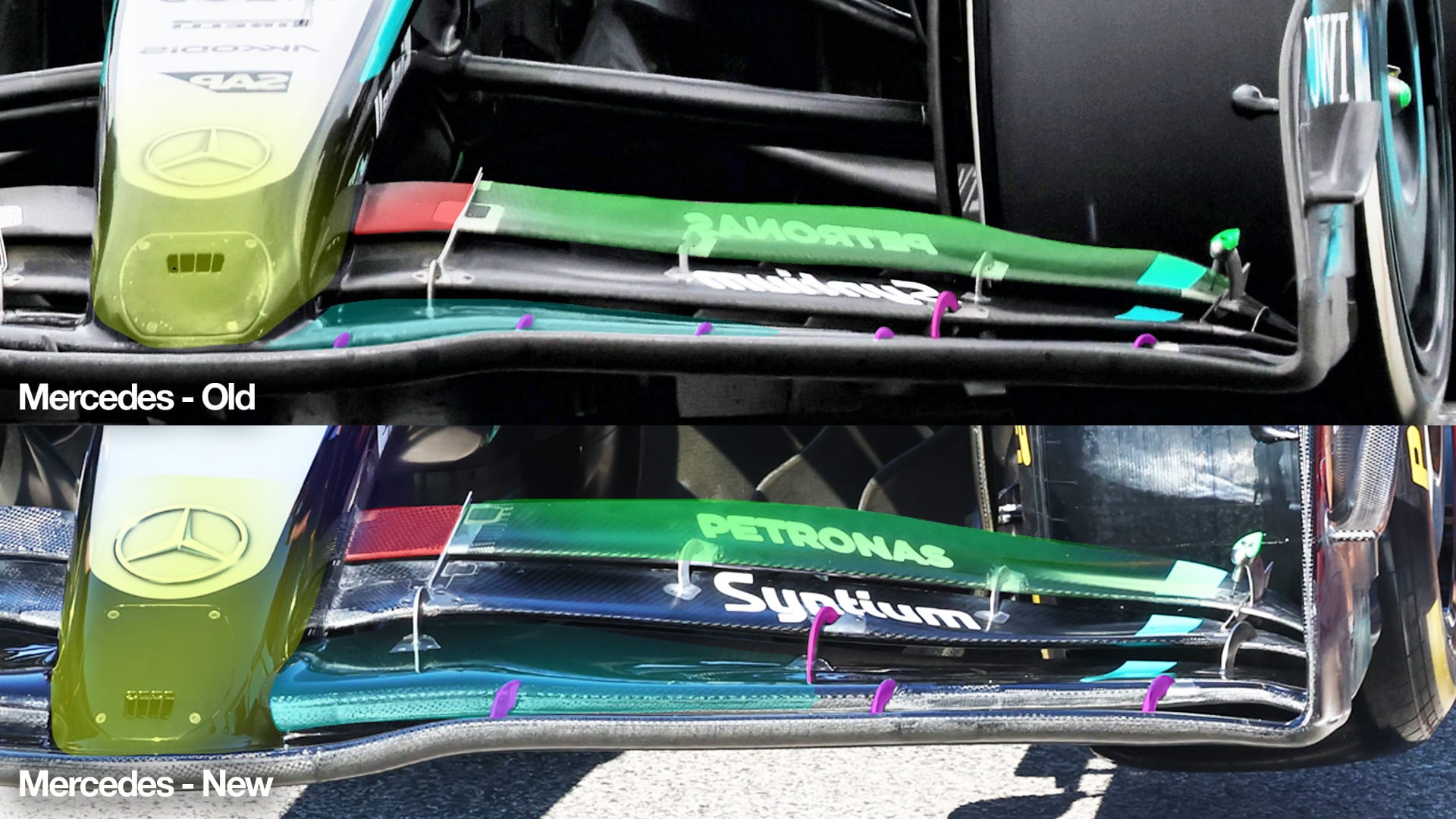
One other interesting aspect of Mercedes' Imola upgrade was the front wing design, which featured a different arrangement of the flap connectors.
With this new wing, Mercedes also returned to a nose design that extends to the mainplane, unlike the shorter nose seen at the start of the season.
A change to the front wing design is always a delicate operation, especially with this generation of cars, which are highly sensitive to aerodynamic balance and how airflow feeds the venturi tunnels.
What surprised many observers, however, was the timing: the introduction of this new wing came just two weekends before a new FIA technical directive that will force teams to run stiffer wings from this weekend's Spanish GP.
Rivals, like Ferrari, are planning aerodynamic and structural changes to the front wing for Barcelona and it's possible the Mercedes' wing introduced at Imola was already slightly more rigid than the previous one - so would not give it the advantage it had before when things were more flexible.
This could have been to help gather data on the car's behaviour and prepare for Spain without too many surprises.
The most likely interpretation is that Mercedes used these two races - Imola and Monaco - to collect comparative data and validate the new component ahead of the stricter checks.
Naturally, the wing is still designed to exploit the maximum legal flexibility while on track. The team that best adapts its wing to the new rules will gain a performance edge.


